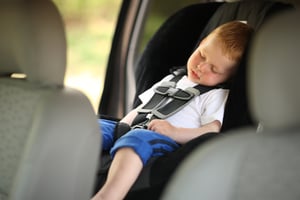 It is a tragic fact that road accidents represent the leading cause of preventable injuries and deaths of children in our country. The numbers behind this preventability are sobering: When correctly used, a car seat or booster seat can reduce the risk of death by as much as 71%. One simple, yet essential piece of equipment can prolong the lives of children who have just begun to explore the world around us.
It is a tragic fact that road accidents represent the leading cause of preventable injuries and deaths of children in our country. The numbers behind this preventability are sobering: When correctly used, a car seat or booster seat can reduce the risk of death by as much as 71%. One simple, yet essential piece of equipment can prolong the lives of children who have just begun to explore the world around us.
For new parents or grandparents, it can be confusing to know what seat best suits your child, and how to utilize it for the best results.
First things first, it's imperative that parents know the laws about safety belts and car seats. The laws vary from state to state. In Florida, car seat and booster seat laws state that:
- Children ages 6 until 18 must be restrained in a child restraint or seat belt.
- Children under age 6 are required to use a child restraint.
- Violation of the child restraint law is a standard offense.
Not only is it important to know the law, it's also important to understand how to best use these safety devices. Consider these tips about the use of car seats and booster seats to help you get started on the path to better child travel safety.
- Newborn babies need to ride in a rear-facing child seat, and should utilize these seats as long as possible. Rear-facing seats are designed to support the fragile neck, head, and spine in smaller children, and to dissipate the force of a crash across the shell of the car seat. Even children up to two years of age have a remarkably fewer instances of death in car accidents when using a rear-facing seat.
- Many car seats on the market are convertible seats. This means they can be utilized as a rear-facing seat until the child is old enough to face forward, then can serve as both a forward-facing car seat and a booster seat. Some of those seats can offer safety to children up to 65 pounds.
- Car seats usually have weight limits listed for what size child can ride in them safely in each position. Be certain to check the manual and follow the guidelines for peak safety.
- Ensure the harness in the car seat fits your child properly. The straps of the harness should pass the pinch test – when fastened, if you attempt to pinch the strap, your fingers should slide off instead of gripping any loose material.
- Always fit the straps when your child is wearing normal clothing instead of bulky winter coats. The straps should be snug without thick apparel. While this may mean a tight fit in the winter while the child wears thicker clothes, it will ensure they are safe in case of an accident.
- A booster seat is a good step between a car seat and a seatbelt alone. It can help ensure adult-sized seat belts properly fit your child.
- Before allowing your child to utilize a booster seat, ensure they have both outgrown the height or weight limits of a car seat, and that they are mature enough to ride in the car without the security of a harness. This means that your child will willingly and reliably sit in the booster seat, with the shoulder and lap belts in place.
There is often help available to those who need it. Many fire stations and hospitals will assist you with ensuring you have purchased the right seat and installing it properly in your car. Call ahead to learn more about the help they can offer.
Laws exist to help protect your child and ensure you receive the resources you require in case of an incident on the road. If you have been in an accident involving a child in a car seat, contact Steven A. Bagen & Associates for more information on how we can help. Put our 35 years of experience to work for you.




